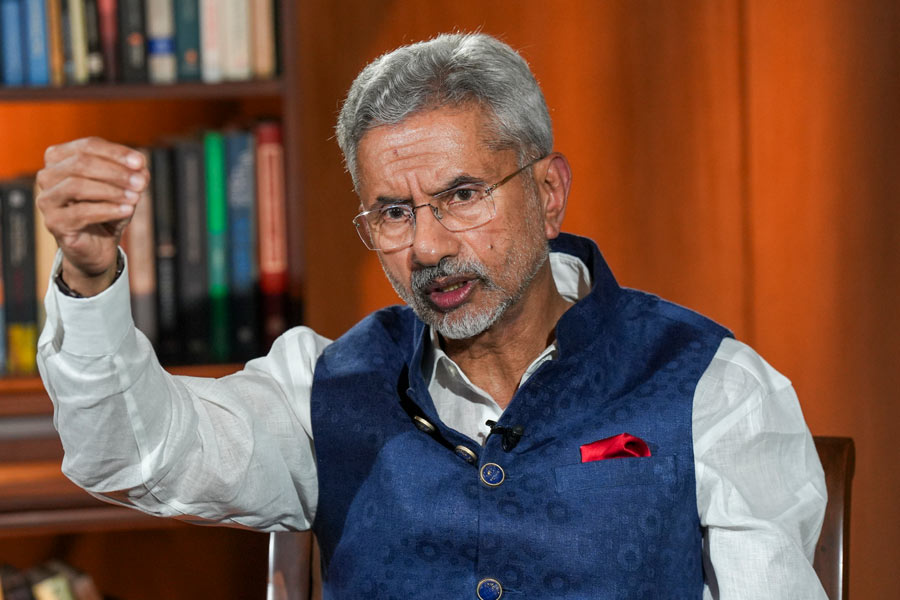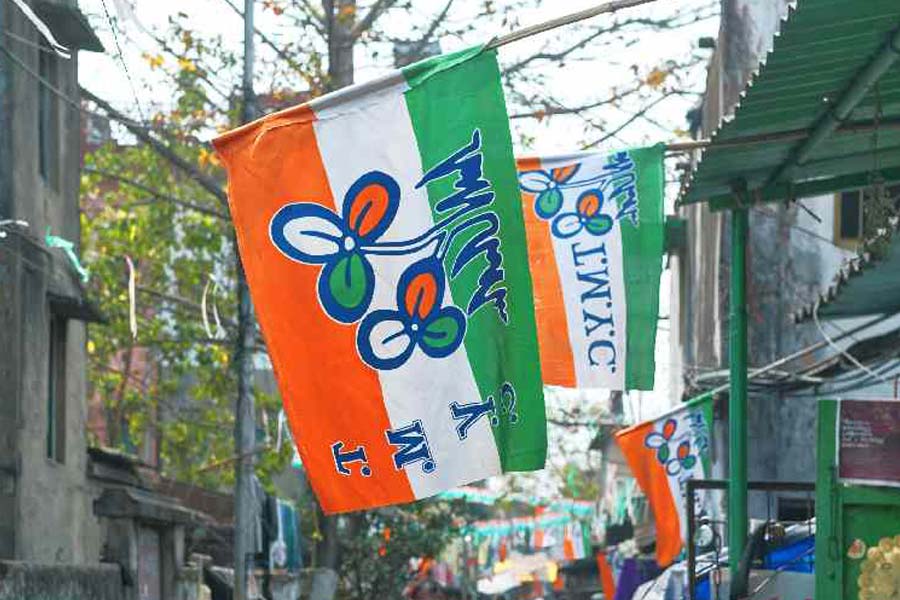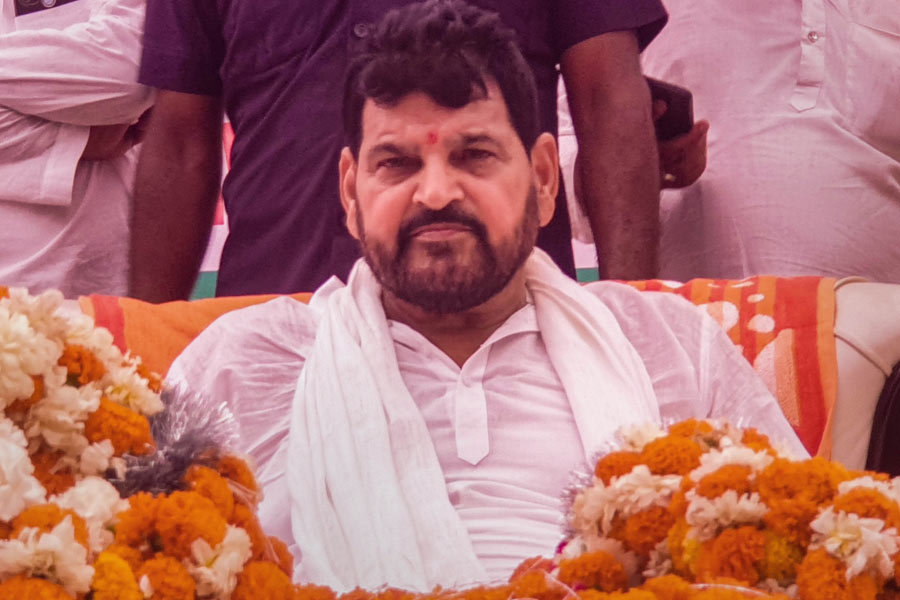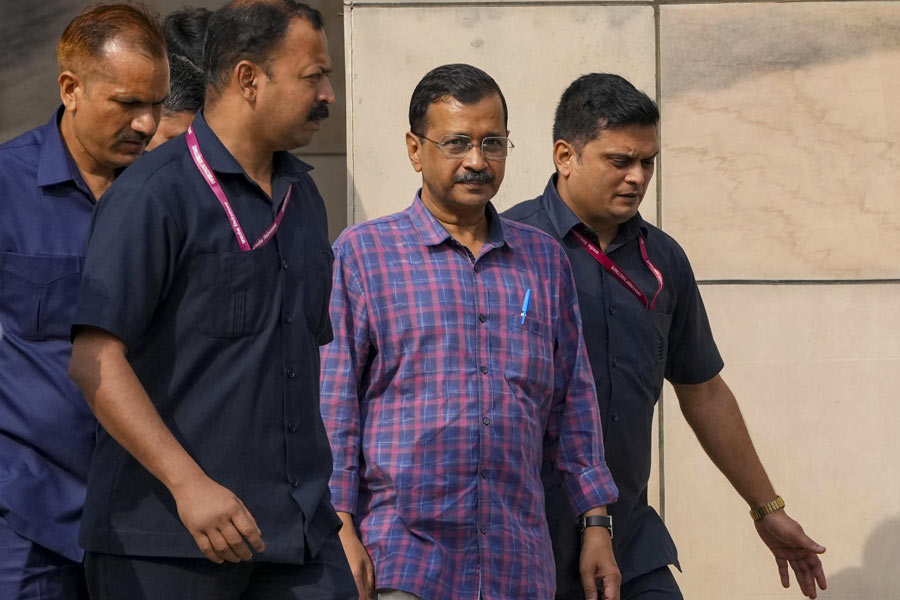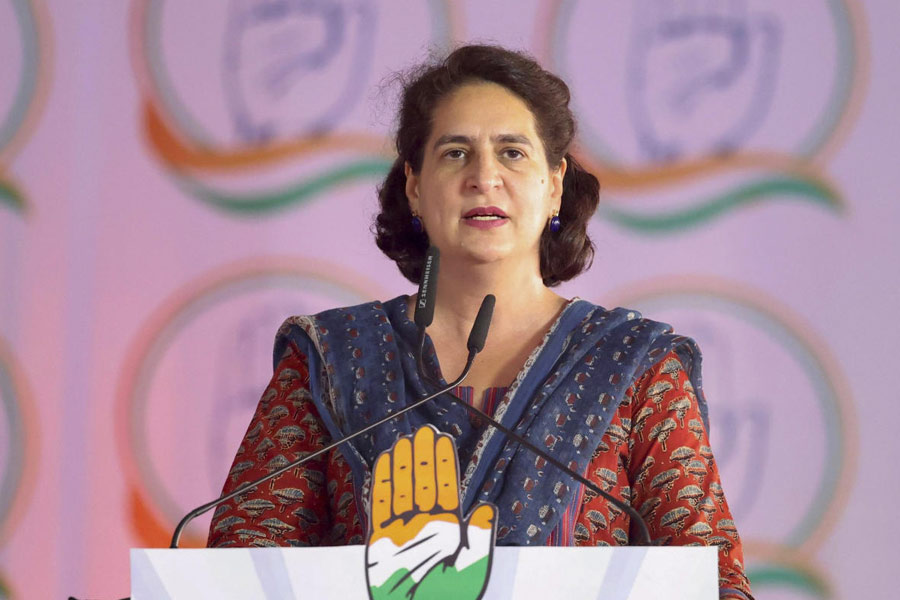|
|
Having watched another production of Shyama about seven days back, with a Chandalika and a Shaapmochan thrown in, back to back, in the interim, one was a little wary about what lay in store at Kolkata Mayur Lalit Dance Academy’s presentation of Shyama at Rabindra Sadan recently. There was a certain weariness too, as this year of Tagorean overkill is steadfastly refusing to come to an end. Many of the productions, put up with great gusto but with little imagination, have come a cropper, doing unspeakable disservice to the genius of the poet they were meant to celebrate.
But this particular offering, albeit unambitious, proved to be quite a charming one. Despite the complexities of human nature that the dance drama, Shyama, engages in, it is in essence a love story gone horribly wrong, thanks to the uninhibited hubris of the heroine. A theme that most people would relate to, if the tale were told in a fetching manner.
Debamitra Sengupta, choreographer and lead dancer, chose the straightforward route of storytelling in the form she understands best: Odissi. There was Kathakali to lend dynamics to the vigorous and somewhat comical character of the guard-cum-prison-keeper (kotal), who is so engrossed in the task of catching a robber that he has no time for justice. Though a trifle hackneyed — after all, the dance form of Kathakali has been freely resorted to since Tagore’s time for this role — Diptangshu Pal was an energetic kotal.
Sengupta lends credence to the intricacies of the character of an arrogant yet achingly beautiful courtesan, who loses her head when she falls in love but redeems herself in seeking the beloved’s forgiveness. Her heinous crime to save his life, however, destroys three men and women, bringing the dance drama to a tragic end. A mature work — Tagore wrote it when he was 79 — it delves deep into human psychology and provides a promise of deliverance to its protagonist. The strange meanderings of the mind that is no stranger to contradictions infuse Shyama with poignant realism.
In Sengupta’s treatment, there is an instinctive understanding of Tagore’s characterization. She relies heavily upon the idiom of Odissi to embellish the dance drama that centres around a noted danseuse. The classical form blends easily with the lyrics and the drama. The songs, sung by Chandrabali Rudra Dutta, Supratik Das, Sasha A.K. Ghoshal and Sounak Chattopadhyay, provided adequate support to the dancers.
Sujit Karmakar’s Bajrasen was suitably portrayed. But ‘young boy’, Uttiyo, needed a little more energy — after all, vulnerability and capriciousness are central to his grand passion for Shyama — to do justice to his role.



